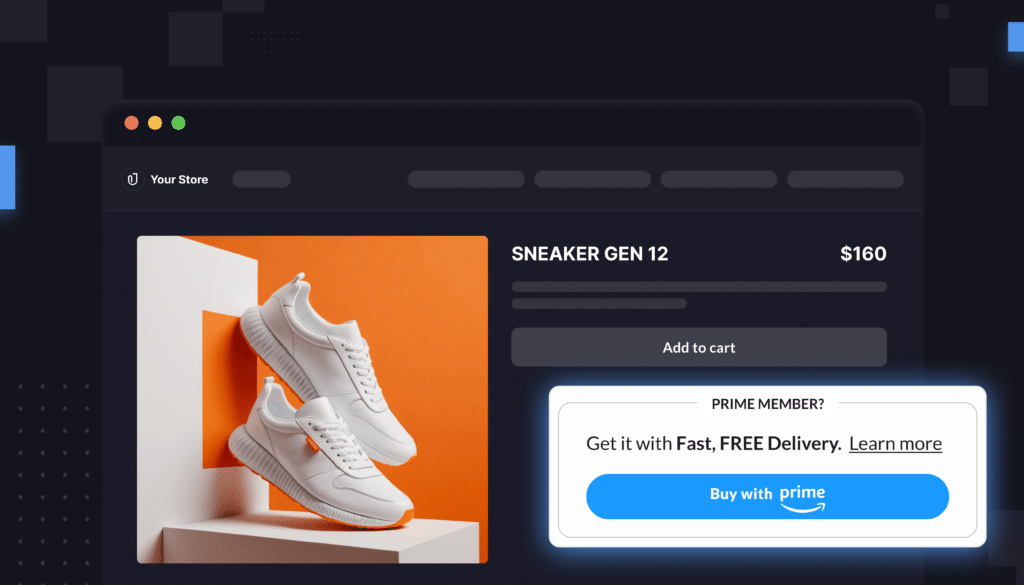When you run Sponsored Display campaigns, as many advertisers are now doing, you might start to encounter a pattern. The conversions on your impressions-based ad campaigns are eerily high.
First, a quick review: With Sponsored Display, you can attribute your campaigns using a per-click model, where you are only charged if a shopper actually clicks your ad.
Or you might need to opt for a per-impressions model, where you are charged for every one thousand impressions.
This latter model is called VCPM (Viewable Cost per Mille). In the VCPM model, the Sponsored Display ad is credited with an impression if it appears in part of a shopper’s screen for at least 1 second.
Generally, the CPC model is preferable, since it provides more of a guarantee of engagement. But Amazon only offers certain targeting options for each campaign type, sometimes forcing you to pick one to reach the audience you want.
“Optimize for reach” Sponsored Display campaigns, for instance, will automatically get the VCPM attribution attribution system.
The issue with VCPM is that Sponsored Display ads show up throughout Amazon.com, often when a shopper is already very close to a purchase.
Shoppers might see a Sponsored Display in the results for a search of a product they were already planning to buy. More significantly, a Sponsored Display ad might literally show up on the product page for your own product.
If those SD ads use VCPM attribution, then the ad would get credit for sales based on Amazon’s last-touch attribution model (assuming there was no other ad click that happens after they viewed the SD ad).
It doesn’t matter if the shopper barely notices, because they were already planning to make a purchase—the SD ad, because it caused an impression, gets all the credit.
Are VCPM ads really stealing credit for campaigns?
The problem with VCPM campaigns stealing credit for sales is twofold. VCPM campaigns can:
Obscure organic purchases. Maybe a higher share of your shoppers than you realize are finding your products and making purchases all on their own. That is important data, but it speaks to the effectiveness of your content, brand identity, and search placement.
But a stray VCPM-attributed campaign will turn an otherwise organic sale into an ad-attributed sale.
Paper over successful ad campaigns. Let’s say a shopper landed on your product page after seeing one of your campaigns, meaning the purchase was not going to be organic either way.
In these cases, because of Amazon’s attribution model, the Sponsored Display ad will take all of the credit, even though it was another campaign that brought the shopper to your product page in the first place.
The ultimate issue, of course, stems from Amazon’s default last-touch attribution system. In a last-touch system, the ad that a shopper last viewed or clicked before they purchased from you gets full credit for the sale, even if that shopper was already sold on your product coming in.
Last-touch attribution means that all the touchpoints that happened before the final touch are obscured. This is always a frustrating reality for advertisers, but it is doubly frustrating when an ad that might have had little to do with the sale gets credit as the last touch.
So how much of a problem is VCPM? We analyzed our internal data, and we found some evidence that VCPM attributed ads really are taking credit for your other ad campaigns.
VCPM campaigns made up 1.3% of the spend across our client accounts but 4.61% of the revenue total. It also had significantly higher conversion rates than all other ad campaigns.
Depending on your point of view, these numbers are either phenomenally good, or perhaps a bit suspiciously too good.
How do you fix VCPM attribution errors?
So should you abandon VCPM-based SD ads entirely? Probably not. Sponsored Display ads are an essential way to boost brand awareness.
You can get access to on- and off-Amazon sites, using sophisticated features like budget estimates, without needing to allocate a certain level of spend. We see them work well for many of our clients.
And the issue of stealing credit is not unique to Sponsored Display ads. DSP also has a CPM system, where ads are attributed based on views, not clicks.
Here are some fixes:
Change your viewability metrics. In the case of DSP, we recommend increasing the viewability percentage to 70% or greater. That way, Amazon will be able to measure whether or not your ad was viewed at least 70% of the time it’s displayed.
With a high viewability setting, you can be more sure that the CPM ad was at least seen by the shopper, therefore cutting down on the number of ads that might take credit for your sale.
Unfortunately, viewability settings are only available for DSP ads. Sponsored Display doesn’t have this option.
Change your attribution model. Ultimately, the solution for most agencies and brands is going to be to change your attribution system.
If you are able to see more holistically how your ads are contributing to the shopper path to purchase, then you’ll be able to figure out a) how effective your SD and DSP ads truly are and b) which successful campaigns the VCPM ads might be masking.
Changing up your attribution model is, for now, only possible in Amazon Marketing Cloud. AMC lets you pivot away from the last-touch model and select your own attribution system.
In AMC, you can create a first-touch attribution model, where the first ad that a shopper sees in a campaign gets full credit.
Or try an equal-weight model, where every ad along the journey gets equal credit for the ultimate sale. You can also create your own custom attribution model, where you weight each touchpoint differently.
What can you do with all this attribution data? Let’s say you’re worried about VCPM ads obscuring your other successful ad campaigns.
When you assign every ad in the shopper journey equal credit for the sale, then you’ll no longer underestimate the success of a particularly strong, say, Sponsored Brands campaign.
You can also figure out just how much your VCPM-based ads are doing for you. Let’s say your SD ads only seem to show up at the end of the shopper journey. That probably means these ads aren’t working for you, and they’re just stealing credit for sales at the last minute.
But if you’re seeing SD ads at the start of and in the middle of your shopper journeys, they are clearly a core element of the shopper journey. You’re just not seeing that full scope of their effectiveness under the last-touch attribution system.
Seeing the full scope of a shopper journey is therefore essential to any analysis of a VCPM campaign. You can do this all with a single click in Intentwise Explore, our platform that supercharges AMC. Choose a query from our library, customize it to your needs, and schedule it to run at regular intervals, across as many accounts as you like.
It’s time to take charge of your VCPM campaigns.








